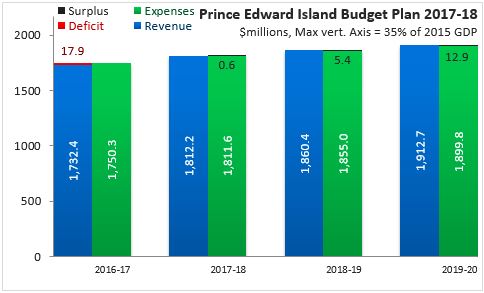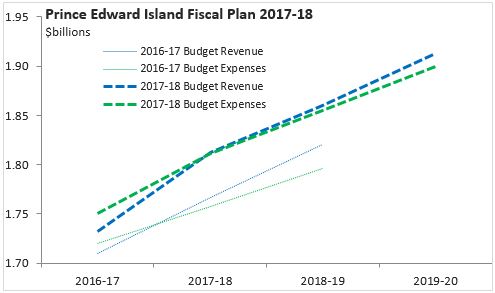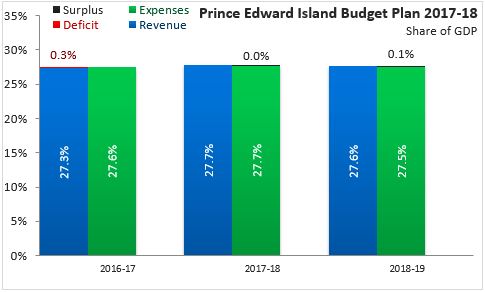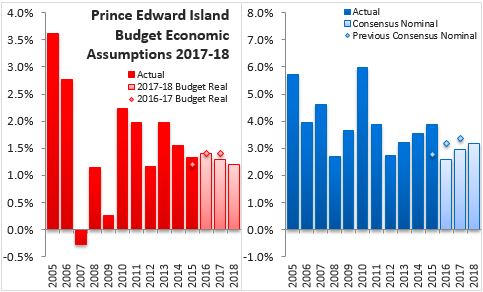The Economics and Statistics Division maintains archives of previous publications for accountability purposes, but makes no updates to keep these documents current with the latest data revisions from Statistics Canada. As a result, information in older documents may not be accurate. Please exercise caution when referring to older documents. For the latest information and historical data, please contact the individual listed to the right.
<--- Return to Archive
For additional information relating to this article, please contact:
April 07, 2017PRINCE EDWARD ISLAND BUDGET 2017-18 Prince Edward Island's 2017-18 Budget was delivered on April 7. The Prince Edward Island Budget reports a deficit of $17.9 million for the 2016-17 fiscal year, followed by small surpluses in the next three fiscal years. Prince Edward Island's surplus is projected to be $0.6 million in 2017-18, rising to $12.9 million by 2019-20.

Compared with the plan released in the 2016-17 Budget, the latest fiscal plan for Prince Edward Island features higher revenues as well as higher expenditures. In the next two fiscal years, revenues are projected to be $40-45 million higher than in last year's fiscal plan while expenditures are projected to be $54-59 million higher.

The government of Prince Edward Island's fiscal plan constitutes a stable share of nominal GDP between 27.3 and 27.7 per cent of GDP, while projected surpluses are each less than 0.1 per cent of GDP in the next two fiscal years. Note that the government of Prince Edward Island does not publish a projection for nominal GDP; this calculation uses a recent consensus among private sector economic forecasters.

Prince Edward Island's economic growth has been very stable since 2009 and this is projected to continue in the next two years. The Prince Edward Island economy (real GDP) is expected to increase by 1.3 per cent in 2017 and by 1.2 per cent in 2018. This si consistent with recent growth of 1.3 per cent in 2015 and an estimate of 1.4 per cent for 2016. The outlook for the Prince Edward Island economy anticipates that population growth will continue at 1.3 per cent per year from 2017-2019, offsetting downward pressure on labour force reported in 2016 and supporting residential construction and rental activity. This population gain includes positive contributions from international immigration under the Atlantic Growth Strategy. Prince Edward Island nominal GDP growth projections shown below is a recent consensus of private sector economists.

Key Measures and Initiatives
Prince Edward Island's Budget for 2017-18 features few new tax or spending measures. The basic personal and spousal amounts under Prince Edward Island's personal income tax system will be increased by 2 per cent (following a 3.8 per cent increase last year). Prince Edward Island's efficiencyPEI agency has established a memorandum of understanding with Nova Scotia's Efficiency ONE to expand energy-efficiency programs.
Prince Edward Island Budget 2017-18
<--- Return to Archive